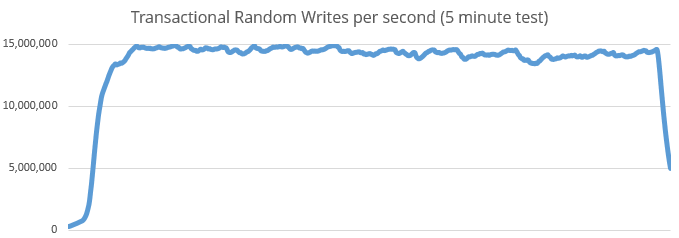Flow: Actor-based Concurrency with C++
From the post:
FoundationDB began with ambitious goals for both high performance per node and scalability. We knew that to achieve these goals we would face serious engineering challenges while developing the FoundationDB core. We’d need to implement efficient asynchronous communicating processes of the sort supported by Erlang
or the Async library in .NET, but we’d also need the raw speed and I/O efficiency of C++. Finally, we’d need to perform extensive simulation to engineer for reliability and fault tolerance on large clusters.To meet these challenges, we developed several new tools, the first of which is Flow, a new programming language that brings actor-based concurrency to C++11. To add this capability, Flow introduces a number of new keywords and control-flow primitives for managing concurrency. Flow is implemented as a compiler which analyzes an asynchronous function (actor) and rewrites it as an object with many different sub-functions that use callbacks to avoid blocking (see streamlinejs for a similar concept using JavaScript). The Flow compiler’s output is normal C++11 code, which is then compiled to a binary using traditional tools. Flow also provides input to our simulation tool, Lithium, which conducts deterministic simulations of the entire system, including its physical interfaces and failure modes. In short, Flow allows efficient concurrency within C++ in a maintainable and extensible manner, achieving all three major engineering goals:
- high performance (by compiling to native code),
- actor-based concurrency (for high productivity development),
- simulation support (for testing).
…
Flow Availability
Flow is not currently available outside of FoundationDB, but we’d like to open-source it in the future. If you’d like to stay in the loop with our progress subscribe below.
Are you going to be ready when Flow is released separate from FoundationDB?


